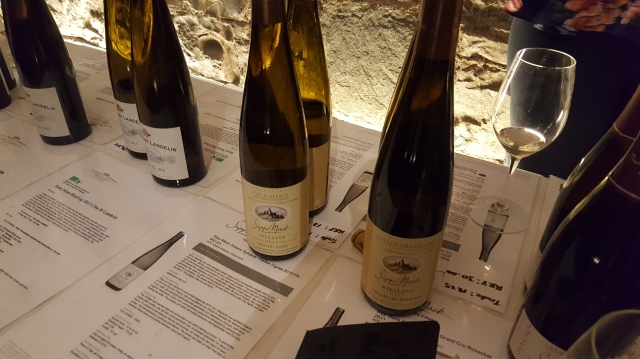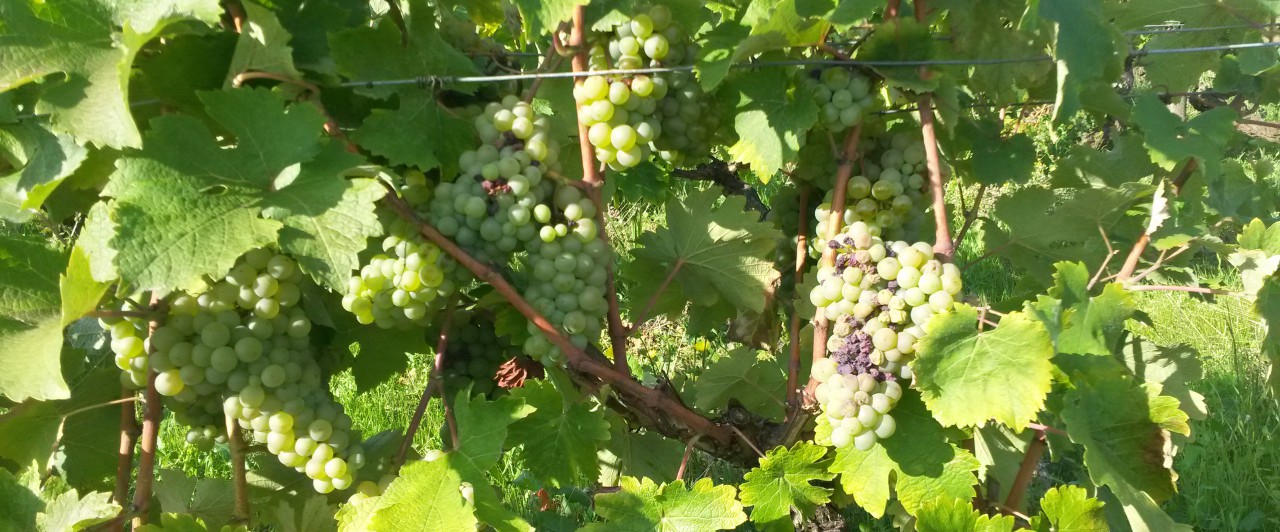On Thursday the 17th of May I attended the Big Alsace Tasting in Dublin, part of the first edition of the Alsace Wine Week. About 25 Alsace producers were represented at the tasting held in the cellars of the Ely Bar & Grill in the CHQ building. This was an excellent opportunity to taste a wide range of Alsace wines, all of which are available to the Irish public either through direct retail or from restaurant wine lists.

I managed to sample most of the wines on offer and I have to conclude that the average quality of Alsace wines remains very high. The warm 2015 vintage shone very brightly in examples where the richness had been balanced by good acidity. The more even 2016 vintage showed well across most wines. At all price points quality can be found, from a simple Edelzwicker blend to a famous Grand Cru. My one gripe is that many entrance level wines lack personality. These basic cuvees are not faulty or poor in quality, but although technically well-made they are quite frankly a bit boring. I know that Alsace is absolutely not unique in this, but there really should be more interesting entry level wines made. However, there were enough examples on display that proved basic cuvees can be individual and exciting. For example Melanie Pfister’s Cuvee 8 (from Pembrokewines) is a beautiful assemblage of the four noble grape varieties (Muscat, Riesling, Gewurztraminer, and Pinot Gris) that is both fresh and rich: a versatile food wine. Domaine Meyer-Fonné from Katzenthal also hit the mark with their Gentil (available from Le Caveau and Baggot Street Wines) that is Muscat based instead of the more usual Sylvaner grape. The choice for Muscat, which makes up about 60% of the blend, results in a fragrant, medium bodied and velvety wine, that would be a great accompaniment to Asian dishes. My absolute favourite basic cuvee was however Domaine Paul Ginglinger’s 2016 Clevner (available from Grape Circus at Sheridans Cheesemongers). This blend of Pinot Blanc and Auxerrois punched far above its weight with a lovely fruity intensity and strong minerality coming through on the impressively long finish. Full credits to Michel Ginglinger’s winemaking skills here, aided by the sheer quality of their vineyards. Most of the fruit that goes into the Clevner is sourced from parcels in and around Eguisheim’s two Grand Crus and many high quality Lieu-dits. The quality of the terroir really shines through in this delicious wine.
In the more expensive price bracket (>£15/€18) some real gems were on display. Bruno Sorg’s Riesling Pfersigberg 2014 (from Frenchwines.ie) was one example; wet stones and citrus on the nose, good acidic backbone, and a nice long grapefruity finish. Domaine Marcel Deiss showed off two stunning wines with their 2003 Altenberg de Bergheim and 2003 Schoenenbourg (both from Frenchwines.ie). Both these wine are blends, as the philosophy of this domaine is such that only multiple grape varieties can fully express terroir in a wine. The wines had been decanted which really made them shine. If I had to pick a favourite it would have to be the Altenberg; still quite young appearance after 15 years in bottle, complex nose, rich ripe orchard fruits, and a finish that kept on going. A real treat was the most famous (and expensive) dry white wine in Alsace, the Riesling Clos St. Hune from Maison Trimbach (available from C&C Gleeson, Berry Bros. & Rudd). The 2011 edition is still a baby, with tremendous minerality, focus, and rapier like acidity. I would love to try this again in 10 years’ time.
My favourite wine of the day was the 2015 Muscat Grand Cru Saering from Domaine Dirler-Cadé (from Frenchwines.ie, The Wine Society). It had a most inviting classic Muscat nose of rose petals and freshly crushed grapes. On the palate it delivered with lacy acidity, soft peachy fruit, all wrapped around a surprising but welcome seam of minerality. This is a very impressive wine and one of the best examples of dry Muscat I have ever tasted.
The organisers told me that the plan is to make this an annual event. I am already looking forward to the next instalment. My hope for the next edition is a stronger turnout from Bas-Rhin. Domaines Pfister and Kumpf & Meyer were the only ones flying the flag for this part of the region. I wish the Irish public can get an opportunity to sample more of the excellent wines from Bas-Rhin next year. In addition I hope to see more of the highly individual and great value wines made from Lieu-dit vineyards by the Alsace cooperatives. For example Cave de Hunawihr make a beautiful Riesling Muehlforst. Come on, bring it along to show it off!
























